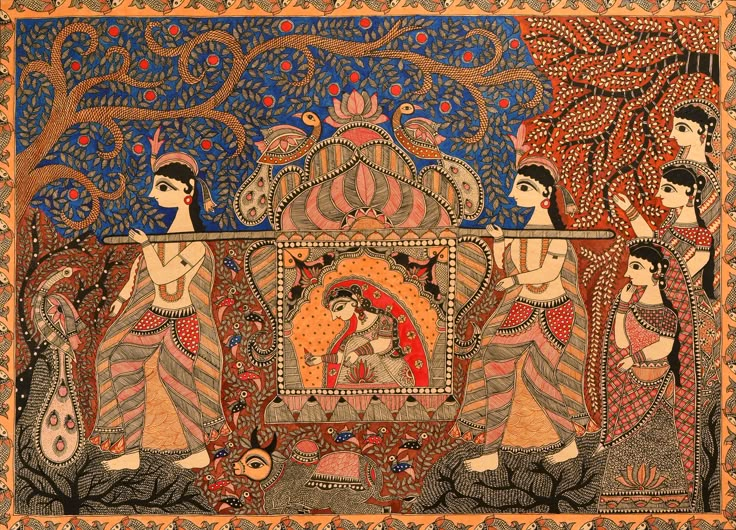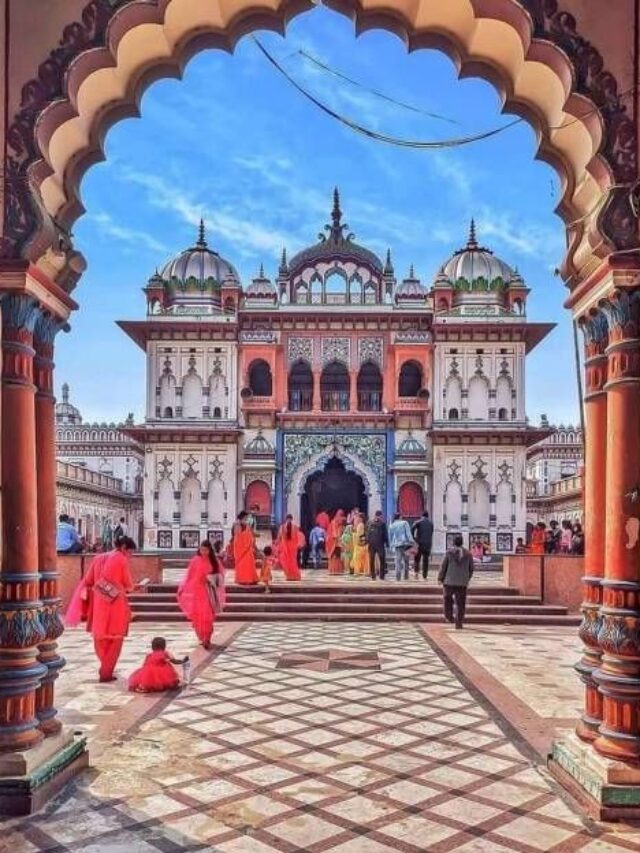what is madhubani painting
Madhubani Painting—also known as Mithila Painting—is a traditional Indian folk art form that originated in the Mithila region of Bihar, India, and parts of Nepal. It is known for its vibrant colors, intricate patterns, and symbolic themes.
The art form is believed to have started during the Ramayana era.
According to legend, King Janaka, father of Sita, commissioned artists to paint scenes of her wedding to Lord Rama on palace walls and floors.
Traditionally, it was practiced by women of Mithila on mud walls and courtyards using natural colors and home-made tools.
In 1967, a major drought hit Bihar. To support rural women, the All India Handicrafts Board encouraged them to transfer their art from walls to paper and canvas, helping Madhubani gain national recognition.
Women like Sita Devi, Bauwa Devi, and Ganga Devi played key roles in bringing this art to the global stage.Madhubani painting is now a recognized art form across the world.
It’s used in fashion, home décor, art galleries, and exports.
Many artists have received Padma Shri and national awards.
It continues to thrive as both a cultural tradition and a source of livelihood, especially for women in rural Bihar.


